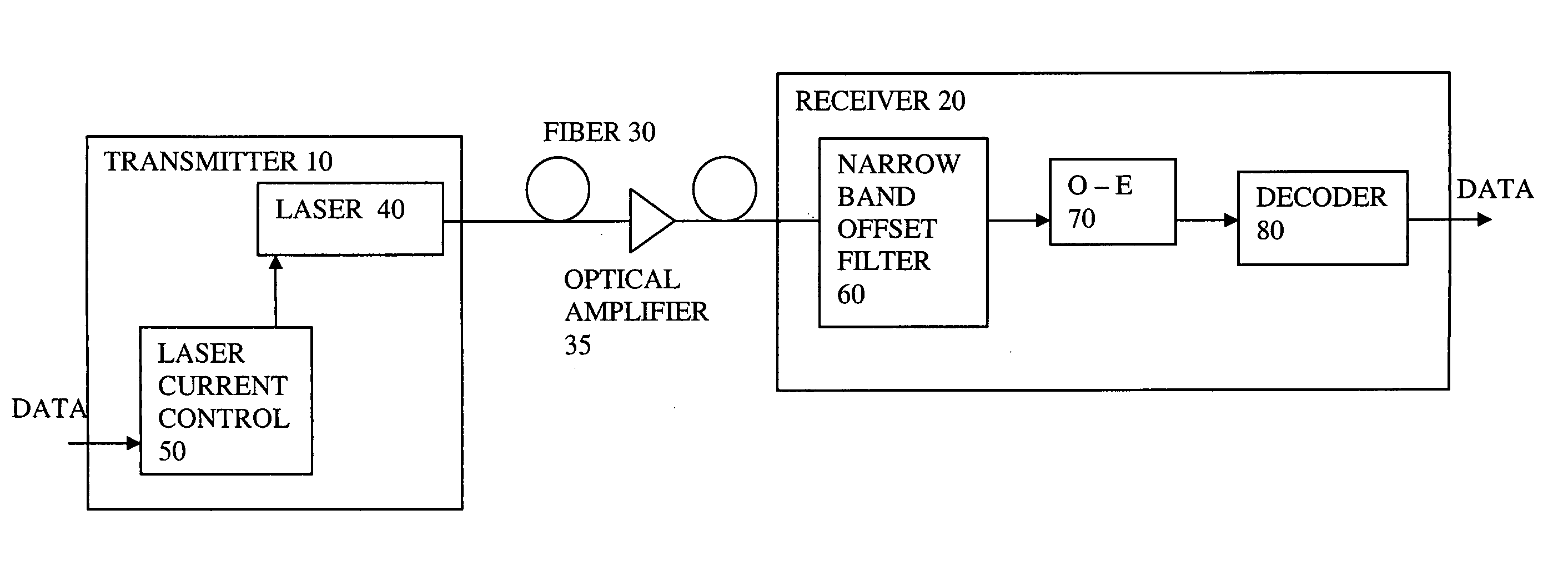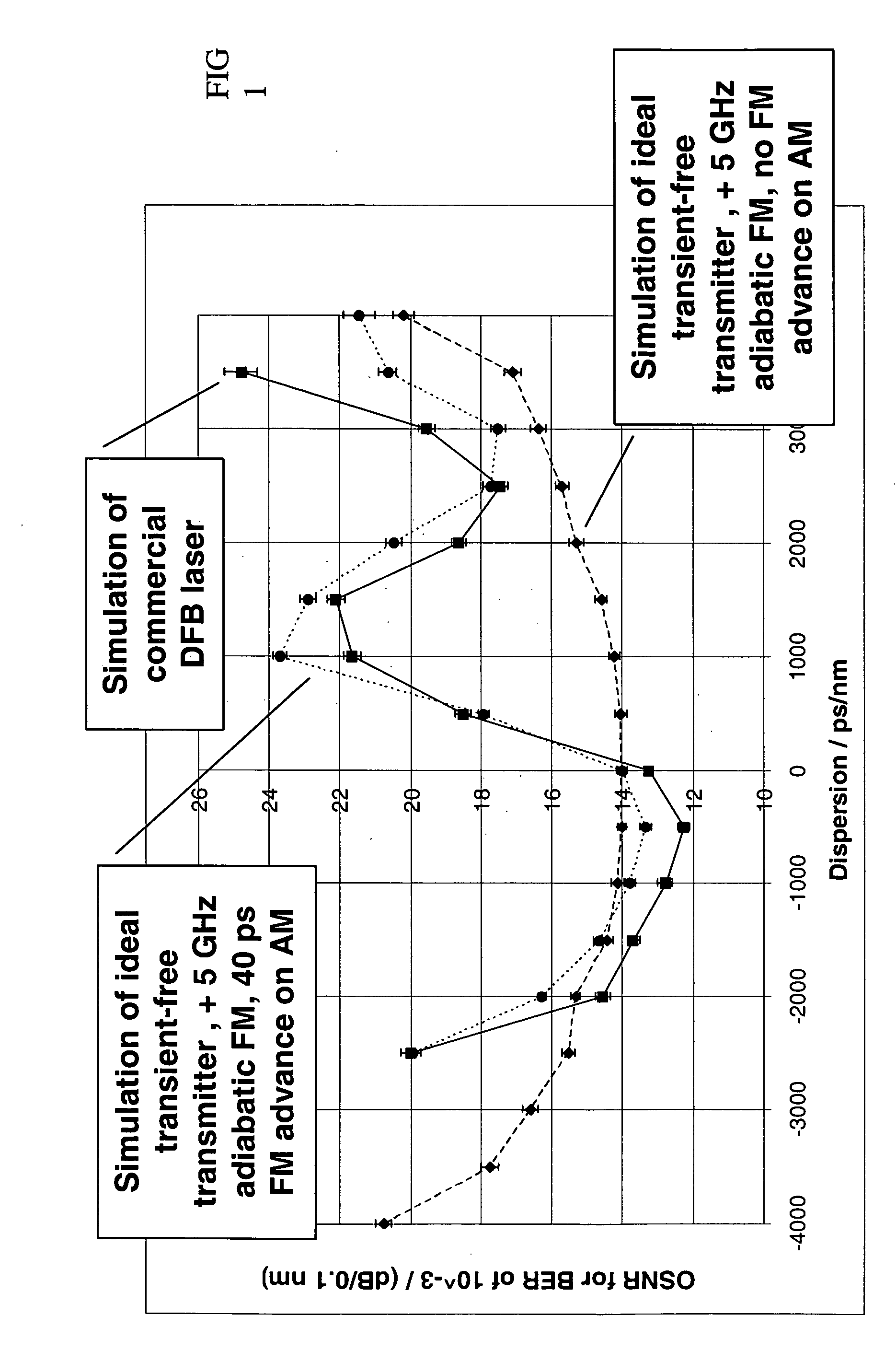Filter to improve dispersion tolerance for optical transmission
a filter and optical transmission technology, applied in electromagnetic transmitters, electrical equipment, electromagnetic transmission, etc., can solve the problems of increasing dispersion penalty and giving penalty, and achieve the effect of reducing phase differen
- Summary
- Abstract
- Description
- Claims
- Application Information
AI Technical Summary
Benefits of technology
Problems solved by technology
Method used
Image
Examples
Embodiment Construction
[0057] Directly modulated DFB lasers exhibit a damped oscillatory transient response in frequency and power when switched between ‘0’ and ‘1’ levels. They emit at different frequency in steady-state ‘0’ and ‘1’ levels, referred to as adiabatic frequency chirp. Notably adiabatic frequency chirp, combined with the delayed response of AM compared with FM, has been identified as the cause of a peak in the OSNR penalty for small positive dispersions (˜1000 ps / nm). The narrowband filter should reduce the FM timing advance on AM to approximately 4000 ps / nm). FIG. 1 shows schematically how the optical signal to noise ratio (OSNR) for a bit error rate (BER) of 10−3 varies with the dispersion. The horizontal axis can also represent distance along a dispersive fiber, and so the plotted curves show the tolerance of the system to optical noise at different dispersions or reaches at a BER of 10−3. A system with add-drop nodes will, for example, contain multiple optical amplifiers to compensate fo...
PUM
 Login to View More
Login to View More Abstract
Description
Claims
Application Information
 Login to View More
Login to View More - R&D
- Intellectual Property
- Life Sciences
- Materials
- Tech Scout
- Unparalleled Data Quality
- Higher Quality Content
- 60% Fewer Hallucinations
Browse by: Latest US Patents, China's latest patents, Technical Efficacy Thesaurus, Application Domain, Technology Topic, Popular Technical Reports.
© 2025 PatSnap. All rights reserved.Legal|Privacy policy|Modern Slavery Act Transparency Statement|Sitemap|About US| Contact US: help@patsnap.com



